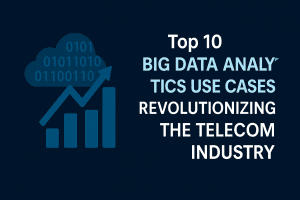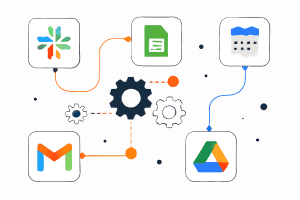Introduction
Artificial Intelligence (AI) is revolutionizing the banking industry by enabling hyper-personalized customer experiences that were previously unimaginable. Banks can now leverage AI-driven data analytics, machine learning models, and natural language processing to tailor services, products, and interactions uniquely to each customer’s preferences and behaviors. This shift enhances customer satisfaction, loyalty, and operational efficiency, making AI-powered personalization a powerful competitive differentiator.
This blog explores how banks can create hyper-personalized experiences using AI, including typical costs involved, potential Return on Investment (ROI), and compelling use cases transforming the sector. For insights on AI in finance and predictive analytics, explore TechOTD’s AI services and their technology blog.
What is Hyper-Personalized Banking?
Hyper-personalization uses AI to analyze vast datasets encompassing transactional history, demographics, social media, and behavioral signals, delivering real-time, individualized banking experiences. This goes beyond segment-based marketing to dynamic, one-to-one customer engagement.
Key Use Cases of AI-Driven Hyper-Personalization
1. Personalized Financial Product Recommendations
AI models analyze spending patterns, credit scores, and life events to suggest tailored loans, credit cards, or investment products.
2. Intelligent Virtual Assistants and Chatbots
AI-powered chatbots offer 24/7 personalized customer support, resolve queries, and proactively alert customers about offers or account anomalies.
3. Customized Credit Risk Assessment
Machine learning algorithms refine credit scoring individually based on expanded datasets, enabling more accurate risk evaluation and inclusive lending.
4. Dynamic Pricing and Offers
Banks can customize interest rates, fees, and promotions in real time based on customer behavior and market conditions.
5. Fraud Detection and Prevention
AI analyzes transaction patterns to identify unusual activities, instantly protecting customers from fraud and identity theft.
Costs of Implementing AI for Hyper-Personalization
-
Technology Investment: Procuring AI platforms, cloud infrastructure, and data storage solutions.
-
Data Management: Cleaning, integrating, and maintaining quality datasets.
-
Talent Acquisition: Hiring data scientists, AI engineers, and financial analysts.
-
Development and Integration: Building, testing, and deploying AI models with existing banking systems.
-
Compliance and Security: Ensuring data privacy and meeting regulatory standards (GDPR, PCI-DSS).
Typical budgets vary based on scope:
-
Small-scale pilots: $100,000 – $250,000
-
Mid-size implementations: $250,000 – $1 million
-
Large enterprise-wide AI initiatives: $1 million+
Return on Investment (ROI) from AI-Powered Personalization
-
Increased Customer Retention: Personalized services improve satisfaction and reduce churn by up to 30%.
-
Boosted Revenue: Targeted product recommendations and dynamic pricing can increase sales by 10-20%.
-
Cost Savings: AI automation reduces customer service costs and fraud losses significantly.
-
Faster Decision-Making: Accelerated loan approvals with AI-driven credit assessment improve conversion rates.
A well-executed AI personalization project typically sees ROI within 12-24 months.
How to Get Started with AI-Powered Personalization
-
Assess Data Readiness: Evaluate data quality and integration capabilities.
-
Identify Use Cases: Prioritize high-impact personalization areas aligned with business goals.
-
Choose AI Partners: Collaborate with AI vendors or development experts like TechOTD for custom solutions.
-
Pilot and Scale: Implement pilot projects, analyze results, and expand capabilities iteratively.
-
Ensure Compliance: Embed privacy and governance frameworks.
Explore how TechOTD supports AI-enabled banking innovations:
TechOTD AI Banking Solutions.
Conclusion
AI-driven hyper-personalization is transforming banking by creating seamless, tailored customer journeys that drive business growth and operational excellence. While initial investments can be substantial, the long-term ROI through enhanced loyalty, revenue, and efficiency justifies the commitment. With expert partners and a clear strategy, banks can harness AI to redefine customer relationships and competitive positioning in the digital age.
Stay updated on AI and banking innovations through TechOTD Blog.
FAQs
Q1: What distinguishes hyper-personalization from traditional personalization?
It uses real-time AI-driven insights for individual customer experiences versus broad segmentation.
Q2: How much does AI personalization cost for banks?
Costs range from $100,000 for pilots to over $1 million for enterprise projects.
Q3: What are the biggest ROI drivers?
Customer retention, revenue growth from targeted offers, fraud reduction, and operational efficiency.
Q4: How quickly can banks implement AI personalization?
Pilots can launch within 3-6 months, with scaling taking 1-2 years.
Q5: Is data privacy a concern with AI in banking?
Yes, compliance with regulations like GDPR is critical when handling sensitive financial data.











